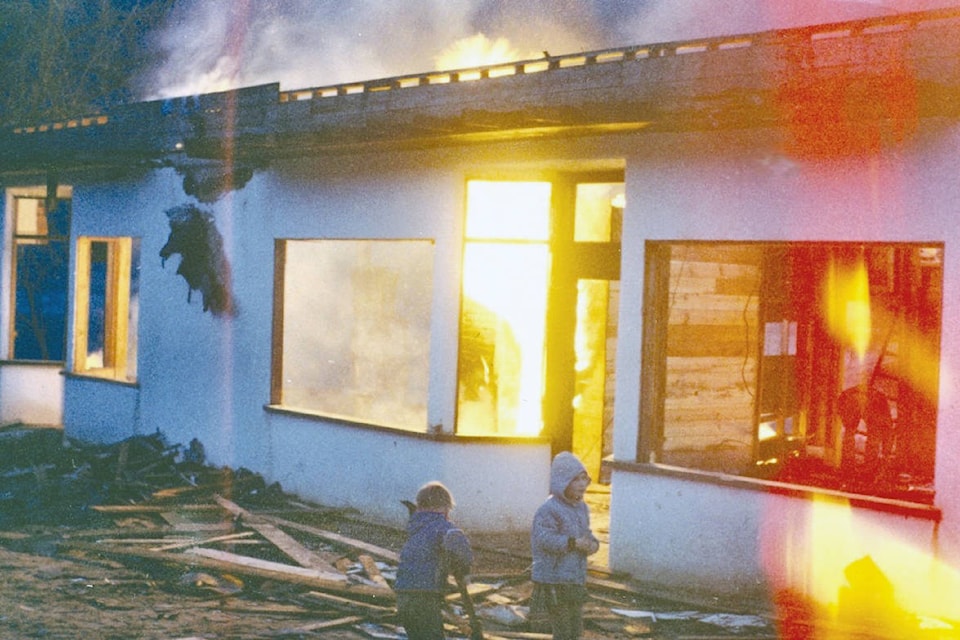NELSON — The renegotiation of the Columbia River Treaty is likely to begin in 2018. The agreement, reached in 1964, was about mutual sharing of, and payments for, the trans-boundary water for flood control in the United States and hydro power in both countries.
But in 2018 there are many other issues, and re-negotiating the treaty will be a complex matter that could take years.
“The bottom line for us is we want to make sure the treaty benefits both countries and shared equitably,” says Kootenay West MLA Katrine Conroy. She’s the cabinet minister responsible for overseeing the province’s part in the re-negotiation of the treaty.
“Folks across the line feel they perhaps pay too much,” Conroy says, “and we are saying in some ways they have not paid enough. The original treaty (included) no consideration for the ecosystem, for First Nations issues, for any potential agricultural industry. When you think of Keenleyside up to Nakusp, that was incredible agricultural area and could have been as great a growing area as the Okanagan. We lost that. We lost a lot of things, so we want to be sure we get our fair share of the benefits.”
The issues that were unimportant or glossed over in 1964, but which are crucial now, include:
• Dams intended to provide flood control in the U.S. permanently flooded land in Canada.
• Manipulation of lake levels in Canada have had negative effects on fish and wildlife.
• Indigenous people’s interests were not considered, including their cultural relationship with salmon.
• The agriculture industry in the U.S. has grown more than expected, making irrigation and flood control more important to that country.
There will be three parties at the negotiating table: the U.S. and Canadian governments, and the B.C. government.
In response to issues like those listed above, the province has published 14 principles on which it plans to base its negotiating position. These can be found in the online version of this story at nelsonstar.com.
The principles refer to the Canadian Entitlement, which means that every year the U.S. pays Canada half of the value of power generated by flows from Canada (about $120 million worth of power annually).
The list of principles refers to “called upon flood control.” The U.S. paid Canada $64 million over 60 years for the right to ask Canada to adjust reservoir levels behind the Canadian dams (Duncan, Mica, and Keenleyside) in order to satisfy the needs of U.S. flood control and power generation. This is the reason for the fluctuating levels in the Arrow Lakes. But after 2024 the flood control agreement ends.
Author and cultural historian Eileen Delehanty Pearkes thinks that might be one of the biggest issues of the renegotiation.
“This means the U.S. will have to use its own reservoirs … as flood control reservoirs. Up until 2024, Canada has provided that by using the Duncan, Mica and Arrow valleys as flood control for the U.S. The U.S. is going to trigger a lot of problems for itself if its reservoirs have to drop like a stone and then refill the way ours (have been doing) in Canada. So what is that worth?”
She says climate change and increased agricultural activity in the U.S. have also changed the equation.
“Over time with the climate having changed and with … Washington State having gotten drier and warmer, (its) snowfall accumulation has shrunk. So as the entire basin has grown warmer and drier, Canadian portions of the basin’s contribution have increased.
“So I guess B.C. feels there is a general greater thirst in the U.S. for a couple of reasons. The first one of them is climate and the other has to do with the irrigation issues. Connected to that is flood control.”
Conroy agrees that not being able to rely on Canada’s dams for flood control will be a major issue for the U.S.
“There is more at stake for the Americans than for us,” she says. “They need the flood control and they are going to have pay for it one way or another. Would we like to have more control over our water so we don’t have the issues around low reservoir levels especially in the summer? Yes, we would, because you know how much it impacts tourism and recreation in our area.”
As for salmon, they were blocked from the Columbia system by the Grand Coulee Dam, constructed in the 1930s, long before the treaty came into effect. So to what degree the possible rehabilitation of salmon will enter into the negotiations is unknown.
“The salmon are protected in the U.S. under the Endangered Species Act,” Pearkes says.” They are endangered on the Columbia system so there is a rule of law down there that these agencies have to abide by. The tribes have woken up tremendously … all the tribes in the U.S. on the Columbia signed a unification agreement, deciding what they held in common as important values, and the top of the list was ecosystem restoration in the Columbia.”
Related:
Pay more for Columbia River, minister tells U.S. (Oct. 2014)
Nelson author: Can we stop thinking of the river as a villain? (Nov. 2016)
Kootenay mayors urge ‘strong stand’ on Columbia River Treaty (Dec. 2016)
Have you heard of Renata? (Feb. 2017)
Making a path for Columbia salmon (May 2017)
Restoring salmon to the Columbia River system (Oct. 2017)
